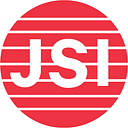Person-centered care has become a buzzword in the global health community. While person-centered care (PCC) is not a new concept, its definition and application in practice are inconsistent and often discussed in relation to specific health program interventions. Despite this, evidence shows that PCC improves access to care, client and provider satisfaction, service quality and efficiency, and health outcomes.
What comprises a person-centered service experience, and why is it important?
We have all had positive and negative experiences with our health systems. Even if we don’t realize it, these experiences influence our future behavior. Did your experience lead you to return for a follow-up appointment? Did you recommend the service or provider to others? Did you trust the information you received enough to act on it?
From our perspective, positive, person-centered services are inclusive, friendly, and respectful. They are identity-affirming and celebratory of diversity. They occur when core PCC principles are put into action and can increase confidence in and demand for health services, improve safety, lower costs, and improve outcomes.
How can we design and deliver person-centered care and experiences?
Use participatory methods to involve communities and users in service design and delivery. We need to involve communities in the (re)design of services and in research and evaluation from the beginning. We must question our assumptions from the outset and leave pre-defined solutions behind. Involving community leaders, health care providers, and clients in defining what is important and incorporating their perceptions and needs into service design builds trust and increases acceptance of interventions. Additionally, convening providers, communities, and program implementers to design services facilitates common language and respectful relationships among all actors.
In India, Sangath’s Initiative for Health Equity, Access, and Research took a participatory approach by using Photovoice Stories to capture and analyze the experiences with and challenges to COVID-19 vaccination access faced by members of the transgender and disability communities. The initiative is using these stories to advocate for equitable access to health care. In the Democratic Republic of the Congo, Nigeria, and Mozambique, the USAID-funded MOMENTUM Routine Immunization Transformation and Equity project used human-centered design to understand barriers to accessing routine immunization services. The project supported community members and health system participants to co-create context-appropriate solutions to identified challenges.
Create a supportive, enabling environment for providers. Focusing on the health workers who provide care is as important as focusing on clients. An environment that embraces PCC helps providers be more empathetic and contributes to better care and communication, and improved understanding of client needs.
To support health workers to provide PCC, training is not enough. We must consider the mix of factors that affect the care they provide, including the system, practical competencies, workload, facility flow, and community relations. Supportive supervision, mentorship, and peer networks, for example, can foster a supportive health worker community and contribute to PCC delivery.
In Yemen, the recent USAID-funded Systems Health and Resiliency Project (SHARP) (2019–2023) recognized that midwives can help change gender norms that hinder women’s access to care. The project not only trained community midwives, it also provided them with medical equipment and education materials to provide high-quality services within their communities. The SHARP team implemented a six-month (October 2022–March 2023) social and behavior change campaign, working with midwives, community health volunteers, and religious leaders to convey information about the importance of antenatal and postnatal care and delivery with skilled birth attendants in a way that encouraged men to support female relatives to access care. The campaign reached more than 250,000 people through community outreach and an additional 43,600 people at mosques during Friday prayers.
Overcome structural challenges with structural solutions. An individual’s service experience is influenced by more than an interaction at a health facility. If we limit PCC to clinical settings, we ignore contextual and structural factors that play a significant role in shaping an individual’s or community’s access to health services, the quality of care they receive, and their overall health outcomes. If we are to overcome structural factors that have negative effects on health behaviors and outcomes, we must take a multi-sectoral approach that includes actors outside the traditional health system.
The Socio-Cultural Movement of Haitian Workers (MOSCTHA) takes a holistic, rights-based approach to improving the quality and condition of life for Haitian immigrants in the Dominican Republic. Because structural factors that compromise health cannot be undone through the health system and facility-level interventions alone, MOSCTHA also works to prevent gender-based violence and stigma and discrimination, and provides legal services to all clients.
Prioritizing people’s service experience is not only about empathy and compassion; it also means ensuring that individual user, health worker, and community needs, preferences, and goals are embedded in service-delivery systems that adhere to PCC principles. Health systems are social institutions that reflect societal values. Delivering high-quality, person-centered service experiences is an expression of our value of individual autonomy, health as a human right, and our desire for equitable outcomes for all.
By Loddys Abreu, MOSCTHA; Katharine Bagshaw, PHI contractor with USAID/Global Health Training, Advisory, and Support Contract; Areej Banajah, JSI Yemen; Nicole Castle, JSI; Kate Onyejekwe, JSI; Jessica Posner, JSI; Harikeerthan Raghuram, iHEAR/Sangath
The contents of this blog represent the views and opinions of the authors and do not necessarily reflect those of USAID or the United States Government.
